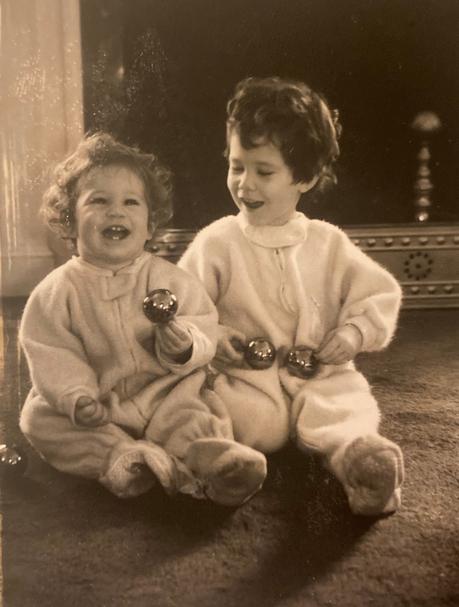
We have reached December, the last month of the third year of the pandemic. And whether you feel like you are in the mood for dancing or not, December means that many interfaith families are about to join in the dance of Hanukkah and Christmas. This year the dance involves new steps because the eight nights of Hanukkah end on Christmas Day. So, whether you celebrate one of those holidays, or both, or neither, all of us need to cultivate empathy for our partners and family members in December, while honoring our own needs, and being mindful of how this season can trigger both joy and sadness, especially in a year of pandemic.
Just before the pandemic, I delivered a new resource, The Interfaith Family Journal, to help any and every family figure out how to honor diverse religious or spiritual or cultural roots, and formative childhood experiences. This workbook can help you in claiming and creating a plan for December (and every other month) that works for your family. The Journal traces a process of writing prompts, discussion topics, and creative activities. The result is a unique resource for therapists, clergy, and families. Here, I distill from the Journal eight ways to plan for a deeper, more mindful, and peaceful season:
1. REFLECT
Ask yourself about how you experienced December as a child. What did you celebrate? How did you feel about Christmas music, decorations, movies, in American popular culture? Were you aware of being part of the religious majority or minority? How have those feelings changed over time?
2. DISCERN
Ask yourself which of your childhood winter holiday rituals you want to continue in adulthood, or take on in the future? What traditions do you want to transmit to any children in your life? Is this because they have religious meaning, spiritual meaning, and/or cultural meaning for you?
3. INQUIRE
Ask your partner(s) or other intimate family members or co-parents how they felt during December as children. Do you understand how your childhood experiences overlap, or diverge? What are the differences? What are the synergies?
4. EMPATHIZE
Ask your partner which public expressions of the season-in public town displays, on the radio, on TV-might make them feel joyful, nostalgic, sad, or alienated, this year. Do you understand why? How has this changed for them, over time? Note that secular or cultural does not necessarily mean less important than religious or spiritual!
5. SENSE
No matter what religious (or non-religious) affiliation(s) or identity you have chosen for your family or children, are there multi-sensory December experiences that you would like to retrieve, or pass down, or take on? Music? Recipes? Crafts? Is your partner okay with tasting, smelling, hearing these with you?
6. PLAN
The number of celebrations can feel overwhelming in December, especially for interfaith families. Make a plan! Which holidays this month will you spend with which extended family members (and when)? Which will you spend with friends? And which will you spend with just your partner(s) and/or kids? With the pandemic surging, balance celebrations you can do at home with zoom call celebrations with extended family. This is a good year to really focus on home-based traditions with your partner(s) and/or children! Make sure that your partner feels comfortable with the plan.
7. GIVE
Whether or not you celebrate Christmas or Hanukkah as a family, December can be an inspiring time to think about helping your community and to prepare for New Year's resolutions. Especially in this ongoing pandemic, community service can help to keep the midwinter blues at bay. Talk to your family members about starting a tradition of December giving, or December action, to help to heal your community or the world.
8. SNUGGLE
No matter which traditions you celebrate, the scientific reality is that this is the darkest and coldest time of year in the northern hemisphere. It is probably not a coincidence that near the midwinter solstice, we try to brighten our world with the Yule hearth, Christmas lights, Hanukkah and Kwanzaa candles, or firecrackers for the Chinese Lunar New Year. So be gentle with yourself, and with your family members, as we move through the darkest days of another challenging year, until we tilt again towards the sun.
Note: An earlier version of this piece was published in 2019 in Psych Bytes, a publication that subsequently folded in the pandemic. Journalist is an interfaith families speaker, consultant, and coach, and author of Being Both: Embracing Two Religions in One Interfaith Family (2015), and The Interfaith Family Journal (2019). Follow her on Twitter @susankatzmiller.
